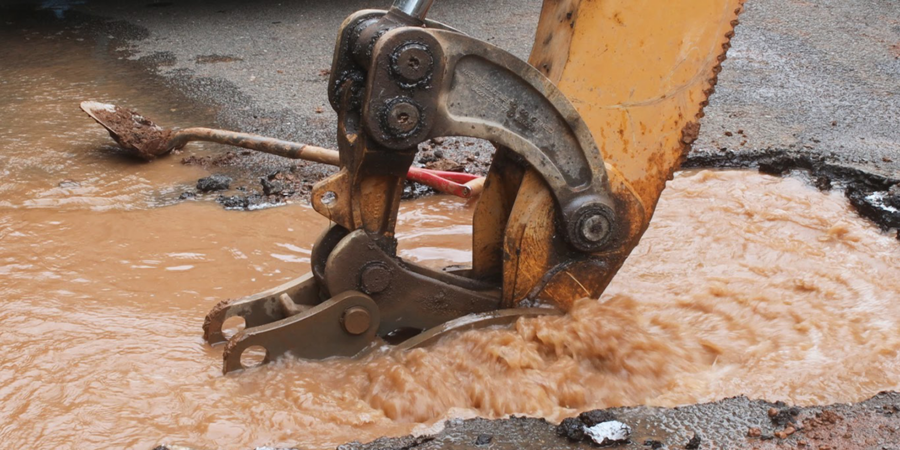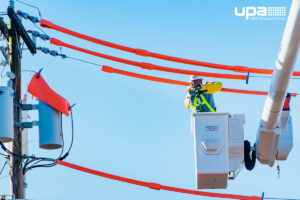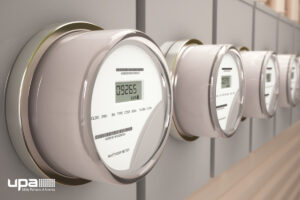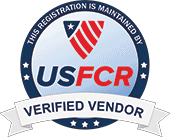Leaky infrastructure causes a loss of about 6 billion gallons of treated water in the United States each day. If it’s hard for you to fathom what 6 billion gallons of water looks like, here’s some real-world context: That amount of water could fill more than 9,000 Olympic-sized swimming pools. According to the United States Environmental Protection Agency (EPA), the average water loss in systems is 16%. But the EPA also says that 75% of the loss is recoverable. It’s possible to reclaim a huge chunk of those 6 billion gallons. Good news for both the environment and utility companies’ bottom lines since they would generate more revenue.
“Apparent water loss” is a term used to classify unauthorized consumption or errors in meter reading. “Real water loss” is what most people imagine when they hear “lost water.” Real water loss is due to leaks and bursts of utility-owned assets like water mains, connectors, and reservoirs. This loss can’t be accounted for by the utility, and it’s possible to correct both types. Today we’ll only address real water loss and proper damage control protocol for leaks.
How to prevent a leak
Without question, the most effective way to manage a leak is by preventing it in the first place. Since water leaks happen to all systems in all locations, it is essential to develop a proactive plan. This strategy should include annual water audits to pinpoint how much water is not making it to its final destination. This requires testing and how accurate the master meters are over each flow regime to find which sections of the pipe are ready for replacement. Using this model, one particular water utility found that they were replacing 1% of buried infrastructure each year, or about 24 miles of pipe.
Related: 3 Keys to Lineworker Safety
While water audits are important, you should think of them as one part of a comprehensive asset management plan (AMP). An AMP can reduce the risk of future leaks through proactive and preventive maintenance. In the same way that you perform regular maintenance on the company’s fleet of vehicles, the same can be applied to pipes and pumps. By routinely servicing these assets, you may be able to find a small leak before it becomes a larger one.
Leak Detection
Technology has improved and enhanced the way utility companies can detect these leaks. Acoustic leak detection sensors deployed throughout service areas will listen for irregularities and signals when there may be an issue. Satellites orbiting the sky are also searching for leaking pipes by analyzing the components of the soil. Leak detection offers a whole host of benefits. These include improved customer satisfaction, reduction in environmental concerns, fewer insurance costs, and a diminished risk of water contamination. Acoustic and satellite leak detection are far from the only options but both are certainly valuable. Especially when it comes to damage control should a leak ever occur.
Related: OSHA And Beyond: Keep Employees Safe in the Field
How to handle a leak if you do have one
It goes without saying, but time is of the essence when it comes to leaks. As soon as a leak hits your radar, the best thing to do is to assess the situation. In some cases, the leak may be minimal, and you can add it to a technician’s schedule. The most significant reason for not diving head-first into repairing a leak is that it could impact other utilities in the immediate area. There’s a chance that excavation could not only disable the immediate area’s water supply, but it could also affect electricity or phone if the technician unknowingly dislodges or jostles certain lines.
Though it may not always be readily available, there are a few key pieces of information that can assist in damage control in the event of a leak. Identifying the optimal way to address a leak is critical. So is determining who and how many customers will feel the impact. Additionally, preparing your staff to set expectations and answer questions about the outage are vital aspects of good customer service. Assets like pipes are prone to seepage. You should always ensure that technicians keep detailed records of any completed repair work for historical purposes.
It’s also in your best interest to coordinate other activities to save on resources when you do dispatch a technician to repair a leak. For instance, after a technician has completed a repair, have them take the time to check nearby hydrants or valves in the distribution system. Like leak detection, this is another way to proactively prevent a future problem.
Utility Partners of America (UPA) works with utility companies to find the exact location of a leak, assisting with damage control protocol upon detection. Contact us today to learn how we can help you improve your leak detection efforts.





